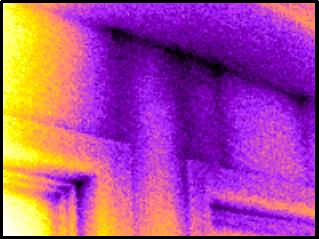One of the most common indicators of a leak is a swollen skirting board.
Commonly referred to as a ‘blowen skirting’.
The key is to find the leak source before it gets to the point of doing damage, but that’s not always possible. So where is it coming from in the first place?
The following thermal imaging photo shows you what I found during a house inspection in Sumner, Christchurch. In this case, the skirting was actually in tact and not showing any signs of swelling due to mositure , yet the thermo camera picked up the problem right away….
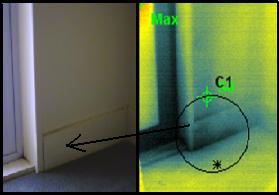
Wouldn’t you prefer to know this before buying the house!
This particular leak was actually coming from the roof, and running down the side of the window frame and showing itself at the bottom of the wall/skirting area. There was a cladding detail running around the perimeter of the house that was flat of top, so the water had no way of running off. The cause of the leak was a crack in the polystyrene cladding above this detail just below the roof line.
We find leaks and moisture… that’s all we do.

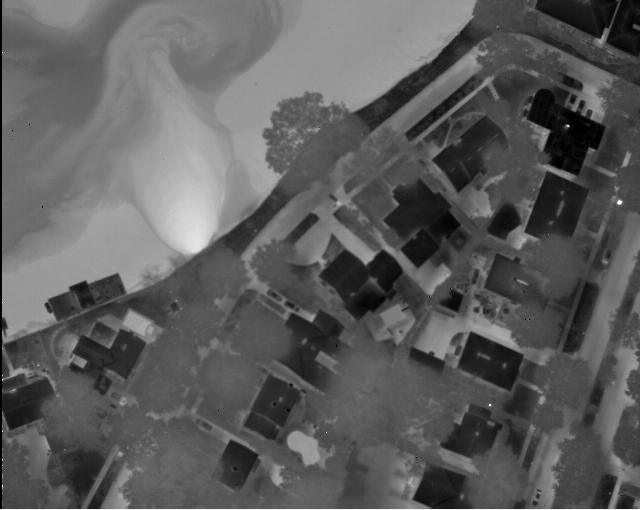
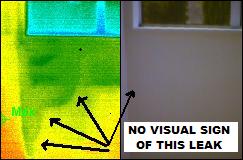
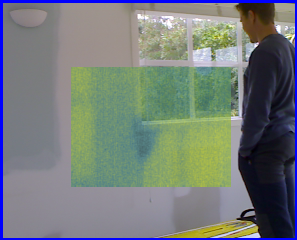
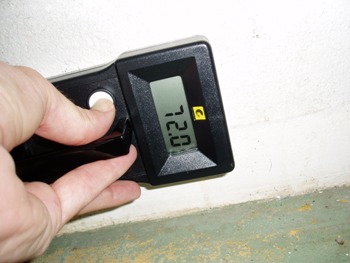
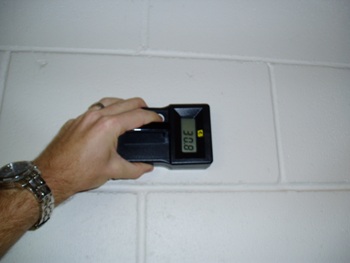
 Once water gets into the wood, you need to act fast because the water will track sideways and get in behind the tiles, around windows (see photo), into other walls behind your bathroom, and if the shower is on a 2nd story of your home, it could seriously damage the ceiling of the room underneath your bathroom. The other problem could be that there is simply to much moisture in your bathroom. You must have a vent fan in the ceiling of any interior shower to reduce the chances of moisture problems getting in behind your walls and shower tiles.
Once water gets into the wood, you need to act fast because the water will track sideways and get in behind the tiles, around windows (see photo), into other walls behind your bathroom, and if the shower is on a 2nd story of your home, it could seriously damage the ceiling of the room underneath your bathroom. The other problem could be that there is simply to much moisture in your bathroom. You must have a vent fan in the ceiling of any interior shower to reduce the chances of moisture problems getting in behind your walls and shower tiles.